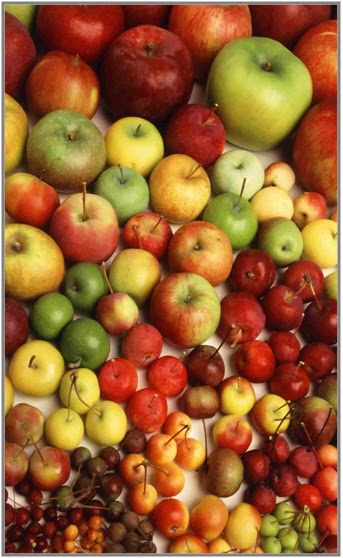As summer transitions into fall, apples are upon us!
Here are some facts about one of America’s favorite fruits:
· 2,500 varieties of apples are grown in the United States, and 7,500 varieties of apples are grown throughout the world.
· Apples are grown in all 50 states (36 states commercially).
· The average size of a United States orchard is 50 acres.
· Apples are fat, sodium, and cholesterol free. A medium apple is about 80 calories. Apples are a great source of the fiber pectin – one apple has five grams of fiber.
· The pilgrims planted the first United States apple trees in the Massachusetts Bay Colony.
· Apple trees take four to five years to produce their first fruit.
· Most apples can be grown farther north than most other fruits, because they blossom late in spring, minimizing frost damage.
· It takes the energy from 50 leaves to produce one apple.
· Apples are the second most valuable fruit grown in the United States. Oranges are first.
· In colonial time, apples were called winter banana or melt-in-the-mouth.
· Apples ripen six to ten times faster at room temperature than if they were refrigerated.
· Archeologists have found evidence that humans have been enjoying apples since at least 6500 B.C.
· Sixty-three percent of the 2005 U.S. apple crop was eaten as fresh fruit.
· National Apple Month is the only national, generic apple promotion conducted in the United States. Originally founded in 1904 as National Apple Week, it was expanded in 1996 to a three-month promotional window from September through November.
Apple Sauce Recipe
Ingredients:
· 4 apples – peeled, cored and chopped
· 3/4 cup water
· 1/4 cup white sugar
· 1/2 teaspoon ground cinnamon
Preparation:
In a saucepan, combine apples, water, sugar, and cinnamon. Cover, and cook over medium heat for 15 to 20 minutes, or until apples are soft. Allow to cool, then mash with a fork or potato masher.
Recipe courtesy of www.allrecipes.com























